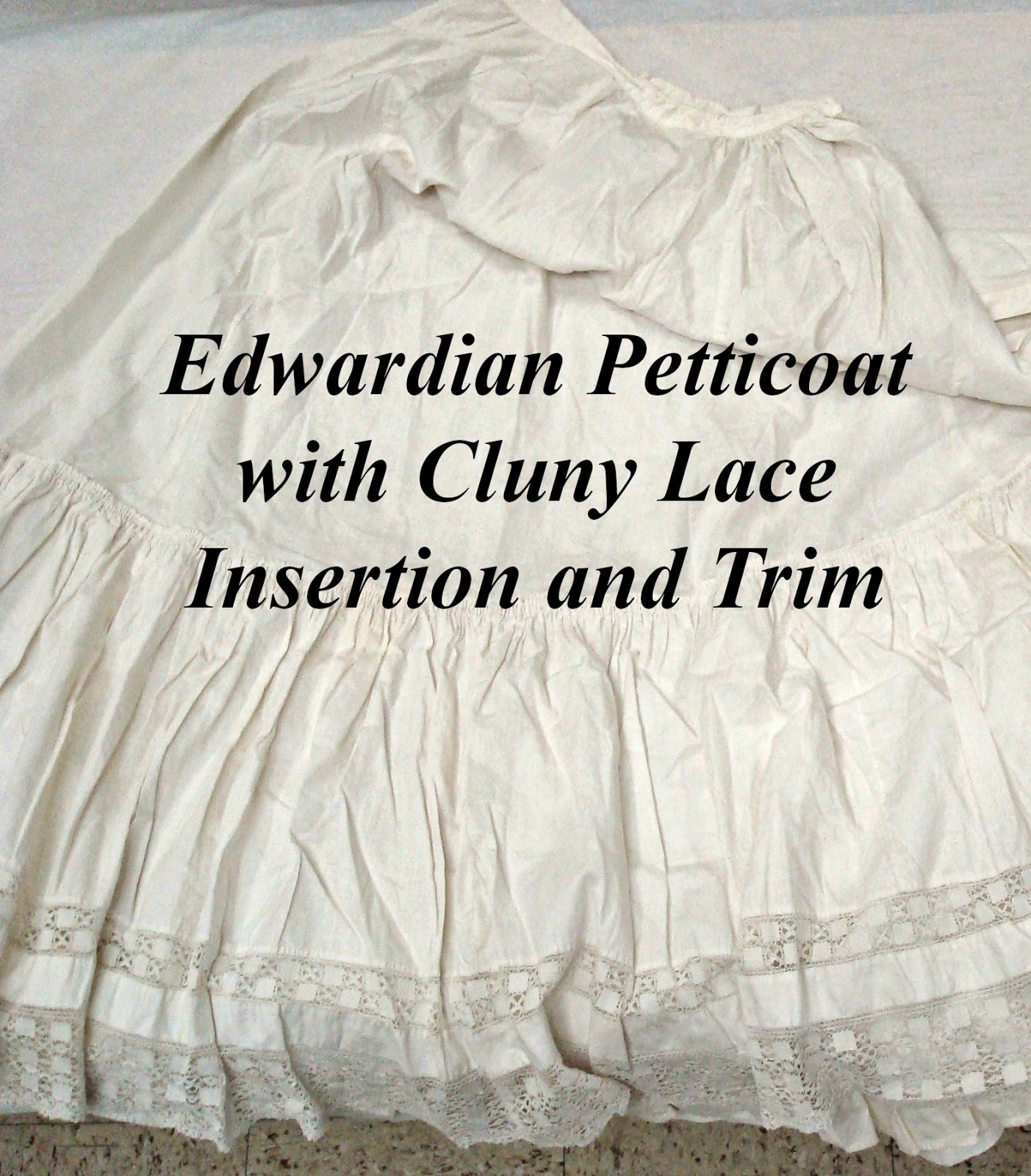"BLACK MOIRE TAFETA (sic) GOWN
CIRCA 1867
(GIFT OF MR. FRANCIS BENNET
OF JERSEY CITY)"
In a mad rush of adrenaline I removed the box from its dark corner of the attic and brought it into the museum. To my utter surprise, I found this inside:
This nearly 150-year-old gem had been rolled up and stuffed into that cardboard box!
Note: If you own an antique garment and wish to store it, lay it flat on a clean cotton sheet or a large piece of acid-free tissue paper. Lay pieces of tissue paper or cotton inside the garment to help support its shape and reduce stress on fragile areas. Cover the garment with tissue paper and another cotton sheet. Gently roll the garment (folds create points of stress that, especially in silk textiles, accelerate deterioration) and store it in a flat, wide acid-free archival quality box.Very carefully, I unrolled the gown and to my complete bewilderment the silk was intact, without the shredding and tears that would result from the points of stress created by folding a silk textile this way. This silk was strong and stiff, and I imagine it must've made an amazing rustling sound as it moved.
This 1867 Mourning Gown is made from black watered silk taffeta. The skirt and bodice are flatlined in brown polished cotton.
The owner (presumably) of this gown attempted an alteration job that was never completed. She unpicked the stitches holding the bodice to the waistband and skirt to the waistband, and unpicked the stitches of the front darts. Altering dresses like these isn't unusual; the material was costly and mourning dresses were worn for a year. It was likely that she gained some weight and needed the dress several years after she first used it.
 |
| Incomprehensible numbers on a twill tape label stitched to the neckline of the gown |
 |
| Here you can see the skirt and bodice removed from the front half of the 1" wide waistband |
 |
| The watered silk taffeta bodice has 2 darts on each side of the center front placket. |
The dress fastens in the front with 9 buttonholes and a row of hooks and eyes. Most of the black velvet covered buttons have been removed or lost, but a few remain and the velvet is very worn through.
The sleeves armscyes are piped. The sleeves are very wide, full and bell-shaped. They appear to be lined in ivory muslin or cotton and are lined in dark blue silk, which has begun to shatter and deteriorate, especially near the wrist. The sleeves are decorated at the wrist with 2 narrow strips of bias-cut watered silk; these strips are arranged in an arching shape above the wrist.
The dress is accompanied by a delicate lace collar that was pinned to the neckline; this is an incorrect archival practice which could leave holes in the silk. Ladies of the time would have sewn these interchangeable lace collars to their gowns with quick, long basting stitches to make removing and replacing them for wash easier.
The skirt is free from decoration except for a thickly piped hem. The stark decorations of this gown strongly indicate its status as a mourning gown: mourning etiquette required that dress trimmings were limited to fabric decoration during the first few months of mourning, known as "full mourning." Later, lighter colors and softer trimmings could be introduced.
This 1867 gown doesn't fit the mourning mold in several ways, however. Neither the dress or its sparse decorations are made of matte crepe material, but rather a shiny, eye-catching watered silk taffeta. I wonder if this dress was used as the woman's "Sunday best" after the period of mourning had ended...perhaps she was the widow of a Civil War soldier?








































